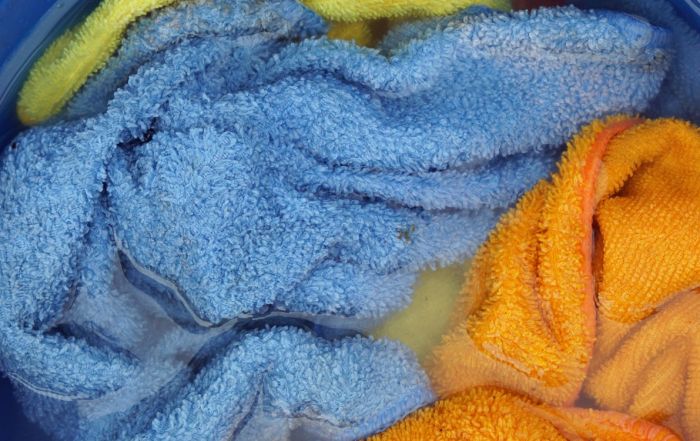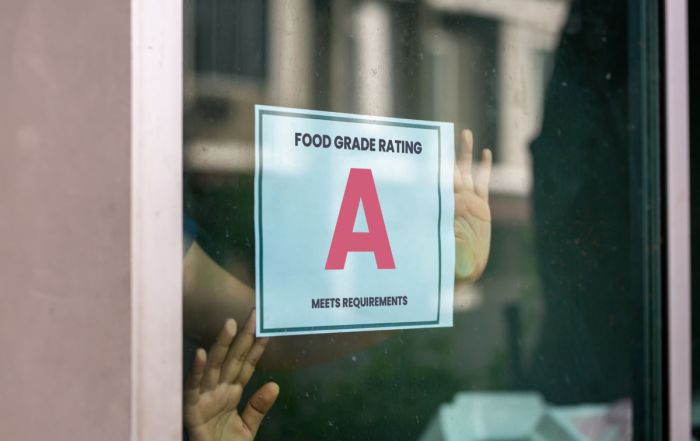Cleaning and Sanitizing in a Mid – to Post- Coronavirus World
What have we learned from this Coronavirus pandemic? In many ways, it is still too early to tell. At this writing, many foodservice operations across the country are still closed. Some are just starting to reopen. Others have transitioned to car side or curbside to-go and have been operating with a skeleton crew throughout the worst of the pandemic.
As you get ready to reopen operations to the public or start serving students again, let’s discuss one that is sure to get noticed by everyone – how food contact and non-food contact surfaces are cleaned and sanitized. For years, we preached the importance of first cleaning and then sanitizing food contact surfaces. But now, in our mid- to post-Coronavirus world, we must be mindful to sanitize all surfaces which get touched by guests and staff as part of their visit to the operation. Remember, they are watching!
As you prepare to reopen, in the craziness of getting staff back on-the-job or onboarding new employees, as well as ensuring food supplies are up to par, take a moment to think through cleaning and sanitizing procedures and how these might be viewed by customers. It may be this topic is not front and center in your mind right now. But, if it is furthest from your mind, it will also be the furthest from your employees’ minds, too. Remember the concept of role modeling!
If you are unable to find information about the effectiveness of sanitizers for Coronavirus, reach out to your suppliers or your health inspector. We guarantee that they will know which is effective or not, and at what concentration each product should be used. If you have equipment that automatically mixes your sanitizer with water, be sure to check that the concentration is within the acceptable range. With chemical agents, more is not always better as too high of concentrations can lead to toxicity if food is in contact. In some operations, if your automatic dispensing equipment has been unused for several days or weeks, it may need recalibrating. Use of test strips ensures proper concentration is reached.
If there is a shortage of your usual sanitizing chemical, over the counter bleach can be used to make a water solution to disinfect cleaned, high-touch surfaces like door handles or menus. The CDC recommends using 5 tablespoons bleach per gallon of water to disinfect surfaces from Coronavirus. Be sure to take note of the concentration of the bleach you are using and make sure it is not expired (yes, bleach can expire!). That mixing recommendation is based on bleach containing about 5% sodium hypochlorite. Adjust the ratio, as needed, to achieve 1,000 ppm of sodium hypochlorite. For example, if it is the concentrated bleach at 8.25%, then use two-thirds or 3 Tablespoons plus 1 teaspoon per gallon of water. Prepare a new bleach water solution daily, as the effectiveness will break down with time and exposure to light.
Retrain your staff to carefully sanitize frequently touched surfaces such as table tops, condiment containers, chair sides, etc. If you developed the food safety checklist for the front-of-house that we discussed in September 2019 , add these to the list! It is critical we don’t accept the adage old habits die hard; don’t let your staff settle for the practices that they did pre-Coronavirus because a focus on cleaning and sanitizing is so important in the post-pandemic world! This is something we must train and remind our staff of in order to better protect our guests and our employees. The food safety culture of your operation must support this.
It is our duty to protect employees and guests, and to ensure we continue to promote practices that help flatten the curve of Coronavirus. Not only is it our duty as owners and managers of businesses to help protect the public, we think it is something those you serve will be hyper-vigilant about, and will demand, of all retail operations. As we stay at FoodHandler, Risk Nothing.
READ MORE POSTS
Embracing Technology for Enhanced Food Safety in Foodservice Operations
Technology. We love it, we hate it. I’ve always been fascinated by technology; I remember getting my first Blackberry in the mid-90s and thinking it was the pinnacle of technological advances. Before that, I remember ordering a dictation program in college that was going to revolutionize the way I “typed” my assignments. Looking back, it really wasn’t worth the box that the program came in. Now, we have ChatGPT that will write the entire paper for us!
Meat Color and Doneness: Persistent Pinking
Late in June, my family and I were able to visit the Black Hills, an area of the country in which I have not had the opportunity to spend much time. One evening, as we dined at a local restaurant, I observed a table across the dining room sending back a dinner. While I couldn’t hear the entire conversation and I certainly wasn’t trying to eavesdrop, it was apparent that the customer was unhappy with the cooking of their hamburger and was sending it back because it was too pink in the middle. That immediately brought to my mind the phenomenon known as persistent pinking. A term I became familiar with because of work done by some colleagues here at Kansas State, which they present each summer to a group of foodservice operators who join us on-campus for an in-depth week-long look at all things food safety.
Quat Binding – Why this Can Have a Disastrous Impact on Your Sanitation Program.
In June, I had the opportunity to represent FoodHandler and speak on food safety behavior for customers of Martin Bros. Distributing in Waterloo, Iowa. One of the questions that was asked caught me a little off guard. The question was about quat binding. It caught me off guard not because it was a bad question, but only because it was not something I had previously been asked nor had not yet been exposed to the phenomenon. However, I soon learned that in certain jurisdictions, it is resulting in changes to how sanitizing cloths are to be stored in sanitizing buckets (or not) in the foodservice industry. When I returned home from the trip, I had to dig into it to learn about what quat binding is and how it might impact foodservice operations.
Are Grades for Foodservice Inspections a Good Idea?
I generally try to stay away from controversial topics in my blog, but this is one I thought it might be interesting to discuss. Occasionally on my travels, I will come across a state or a local jurisdiction that requires foodservice inspection scores be posted in the window of the establishment. The idea is to allow would-be customers the ability to see how the foodservice operation in which they are about to eat scored on their latest health inspection.










